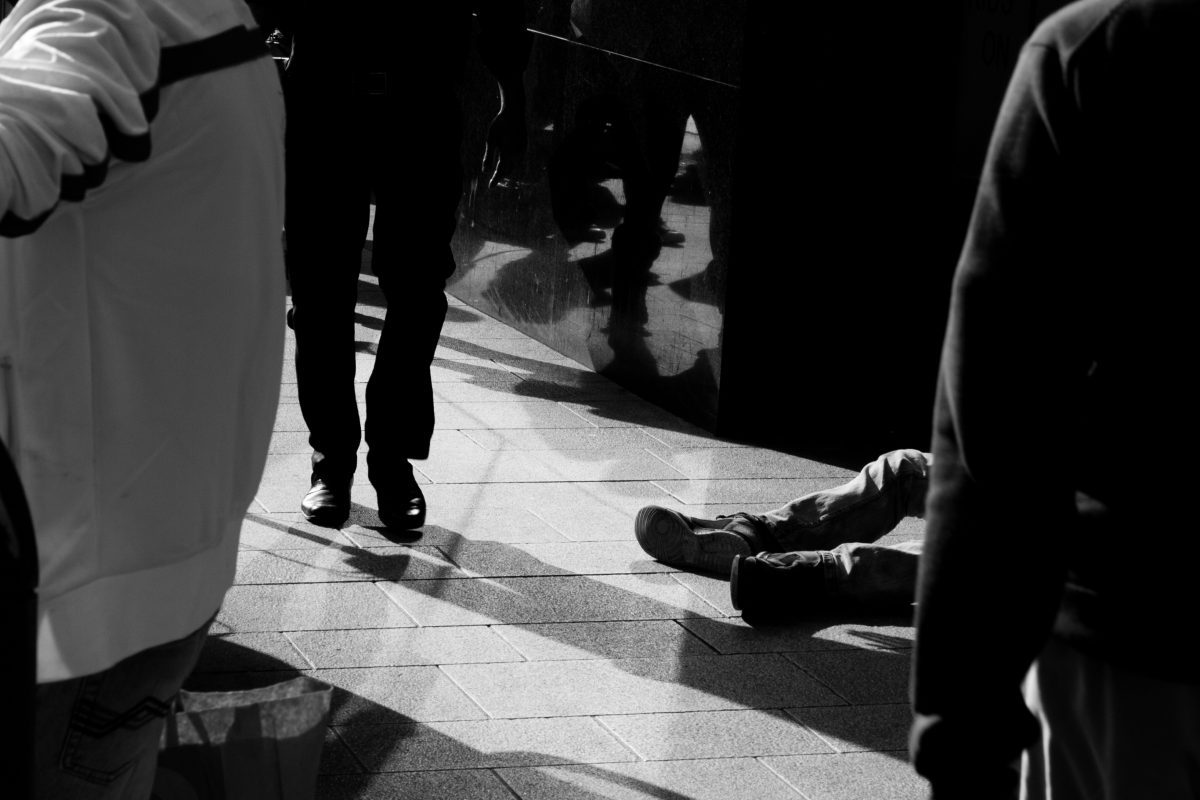People we see range across rough sleepers, sofa surfers, those in shelter and people who have recently moved into accommodation, vulnerable, socially isolated and those on the poverty line.
There are numerous factors relating to homelessness, a minority are entrenched homeless and prefer that way of life. There is a higher level of mental illness within the homeless & socially isolated population along with drug and alcohol abuse which can at times be quite challenging. Also, homeless/rough sleepers are generally a fairly transient population.
Research has shown that those taking up the offer of a podiatry service are far more likely to see other health care professionals. People often want to talk about other serious issues they may have, and thus it is useful to have local phone numbers of e.g. rape crisis centres, emergency shelters, local GP’s, drug & alcohol advisory services to name but a few. A well set up drop in-centre should have these numbers to hand and staff to deal with them
The podiatry service we offer through the Forgotten Feet project thus tends to be of a basic short-term nature and aims primarily to alleviate pain, replace worn out or ill-fitting footwear to prevent further problems, and help with simple biomechanical issues, as well as to show compassion – an important consideration.
Gaining consent to begin treatment is a simple verbal agreement, and patient notes are perforce very brief as quite often people do not wish to tell you any more than their name and date of birth. They are generally quite suspicious or mistrusting at first, medical histories are often, if given not accurate. You must therefore treat everyone as high risk. Always ask permission and gain written consent for any photographs, or videos, as some will refuse, and others won’t want their faces in the shot to protect identity. Protect identity if required and avoid showing tattoos or scars that could identify someone inadvertently. On each person’s notes, do ensure you have date, treatment given, anything given out and signature as a record – in some clinics we use a postcard for each person.
Treat everybody as high risk and conservatively. Use sharp debridement if necessary, don’t over debride and keep the risk of cutting anyone to a minimum – this reduces the likelihood of blood contamination and the risk of infection, which is possible due to unsanitary conditions.
Commonly seen complaints include: Pitted keratolysis, corns, calluses (heavy) – often with extravasation, fungal skin and nail infections, Immersion foot, maceration, long thick nails, bacterial infections, ulcerous and pre-ulcerous lesions along with other conditions. In terms of equipment; a basic doms bag is adequate, a headlamp is often useful, plastic aprons, non-sterile gloves, and couch roll, two chairs – one each for operator and patient – a footstool if you have one is very use. It is possible to offer a simple service anywhere, it doesn’t need to be in a smart clinic – we have treated in a secluded corner of a church, in a small space of a busy room, as well as in separate rooms if available.
Always be kind – this is one of the most rewarding things you will ever do!

